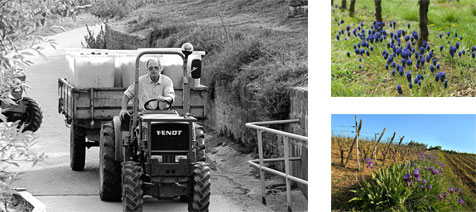
CULTURE
N
eedless to say that to produce a great wine you need to select high quality grapes. At Kientzler’s vineyard, this adage has been thoroughly respected over decades. The greatest care is taken of the land and the vines all year long. Outside traditional labour, the vineyard keeps its focus on three elements: terroir, ancient vines and selecting vine stock.
A hundred years ago, Alphonse Kientzler had already started growing wine on the hillsides of Ribeauvilé whereas most wine growers privileged flatter grounds which were easier to work on. But even back in those days, he realised, together with a few other growers that their efforts paid off. These sloping grounds produced far better wine, due to the nature of the soil, the quantity of sun and the local microclimate….
Nowadays, 90% of the family vineyard is located on the hillsides around the area of Ribeauvillé.

The 4th and 5th generation have preserved this heritage and strive to improve their production every year. The old vine are also part of this precious heritage. 80% of the Kientzler vineyard is more than 35 years old and 10% over 80 years.
These “mature” plants are carefully maintained to last as long as possible. Like some wines, vines improve with age. Their development and grapes build up a natural balance between sweetness and acidity. Stronger plants are less sensitive to rot and illness. Denser and deeper roots provide better protection against drought and rain. These factors reveal the real heritage of the wine.
When a vine dies out, we must replant. In order to improve the quality of the grapes, every new vine stock is selected carefully. Each graft is selected from a different vine stock (massale selection) in order to maintain a genetic diversity within the plot. This selection takes place over years of supervision during grape picking. Genetic diversity enables a better adaptation to changes in vintage. Therefore, the Kientzler vineyard is an example of mastery in quality vine growing.



